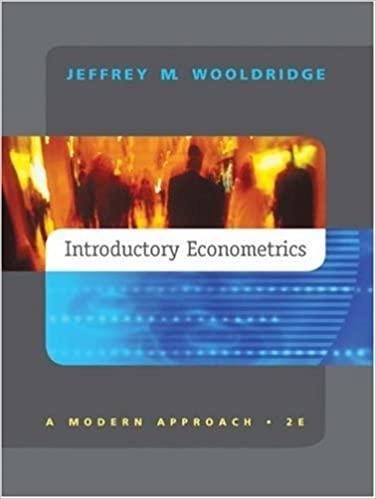Question
Question 2. Suppose that American firms become more pessimistic and decide to reduce investment expenditure today in new factories and office space. How will this
Question 2. Suppose that American firms become more pessimistic and decide to reduce investment expenditure today in new factories and office space.
How will this decrease in investment affect output, interest rates, and the current account? (8 marks: 4 marks for the graphs and 4 marks for the explanation)
Question 3. In the late 1990s, several East Asian countries used limited flexibility or currency pegs in managing their exchange rates relative to the U.S. dollar. This question considers how different countries responded to the East Asian currency crisis (1997-1998). For the following questions, treat the East Asian country as the home country and the United States as the foreign country. Also, for the diagrams, you may assume these countries maintained a currency peg (fixed rate) relative to the U.S. dollar. Also, for the following questions, you need consider only the short-run effects.
a. In July 1997, investors expected that the Thai baht would depreciate. That is, they expected that Thailand's central bank would be unable to maintain the currency peg with the U.S. dollar. Illustrate how this change in investors' expectations affects the Thai money market and the FX market, with the exchange rate defined as baht (B) per U.S. dollar, denoted EB/$. Assume the Thai central bank wants to maintain capital mobility and preserve the level of its interest rate, and abandons the currency peg in favor of a floating exchange rate regime. (8 marks: 4 marks for the graphs and 4 marks for the explanation)
b. Indonesia faced the same constraints as Thailandinvestors feared Indonesia would be forced to abandon its currency peg. Illustrate how this change in investors' expectations affects the Indonesian money market and FX market, with the exchange rate defined as rupiahs (Rp) per U.S. dollar, denoted ERp/$. Assume that the Indonesian central bank wants to maintain capital mobility and the currency peg. (8 marks: 4 marks for the graphs and 4 marks for the explanation)
c. Malaysia had a similar experience, except that it used capital controls to maintain its currency peg and preserve the level of its interest rate. Illustrate how this change in investors' expectations affects the Malaysian money market and FX market, with the exchange rate defined as ringgit (RM) per U.S. dollar, denoted ERM/$. You need show only the short-run effects of this change in investors' expectations. (8 marks: 4 marks for the graphs and 4 marks for the explanation)
Step by Step Solution
There are 3 Steps involved in it
Step: 1

Get Instant Access to Expert-Tailored Solutions
See step-by-step solutions with expert insights and AI powered tools for academic success
Step: 2

Step: 3

Ace Your Homework with AI
Get the answers you need in no time with our AI-driven, step-by-step assistance
Get Started


